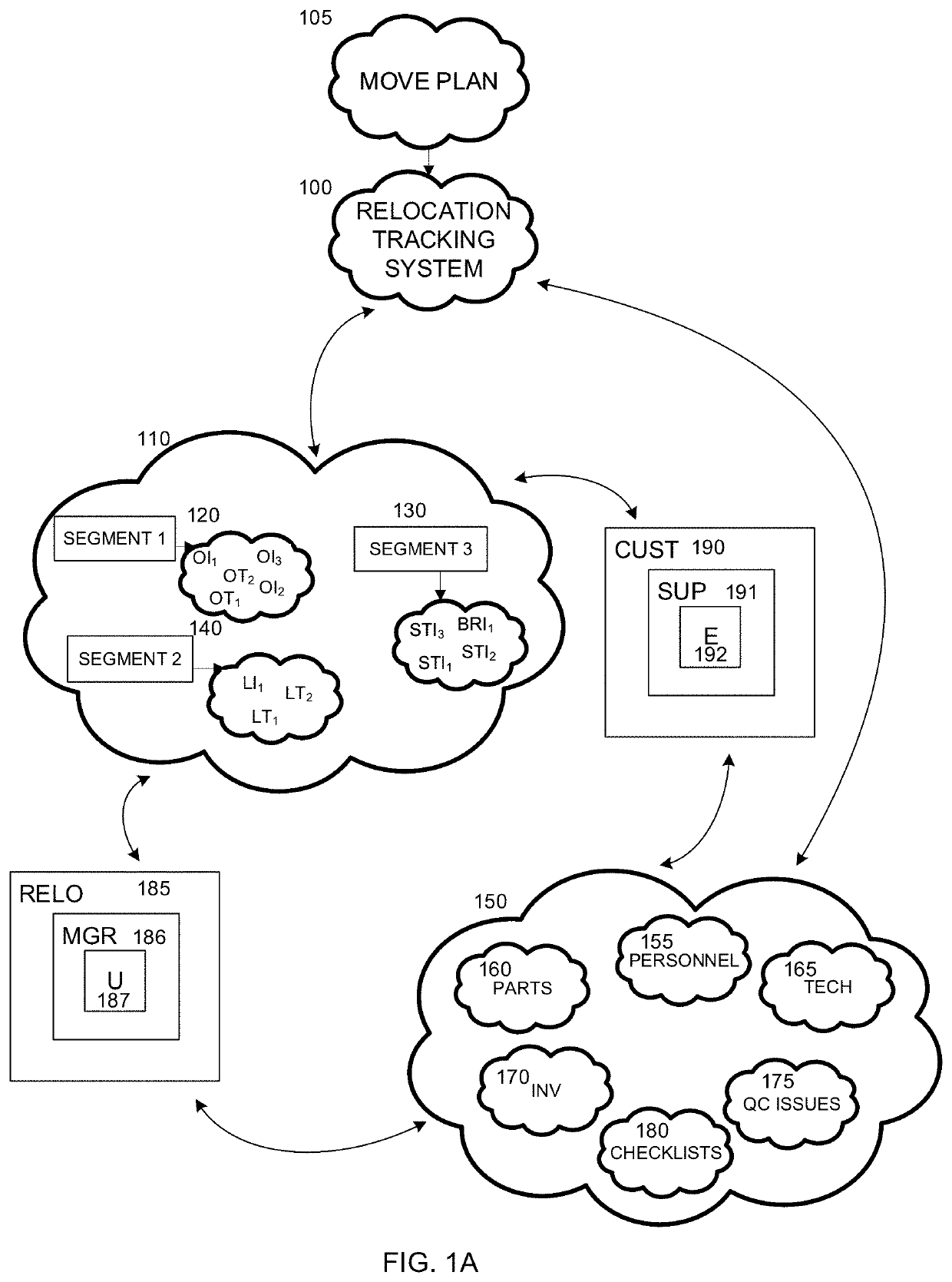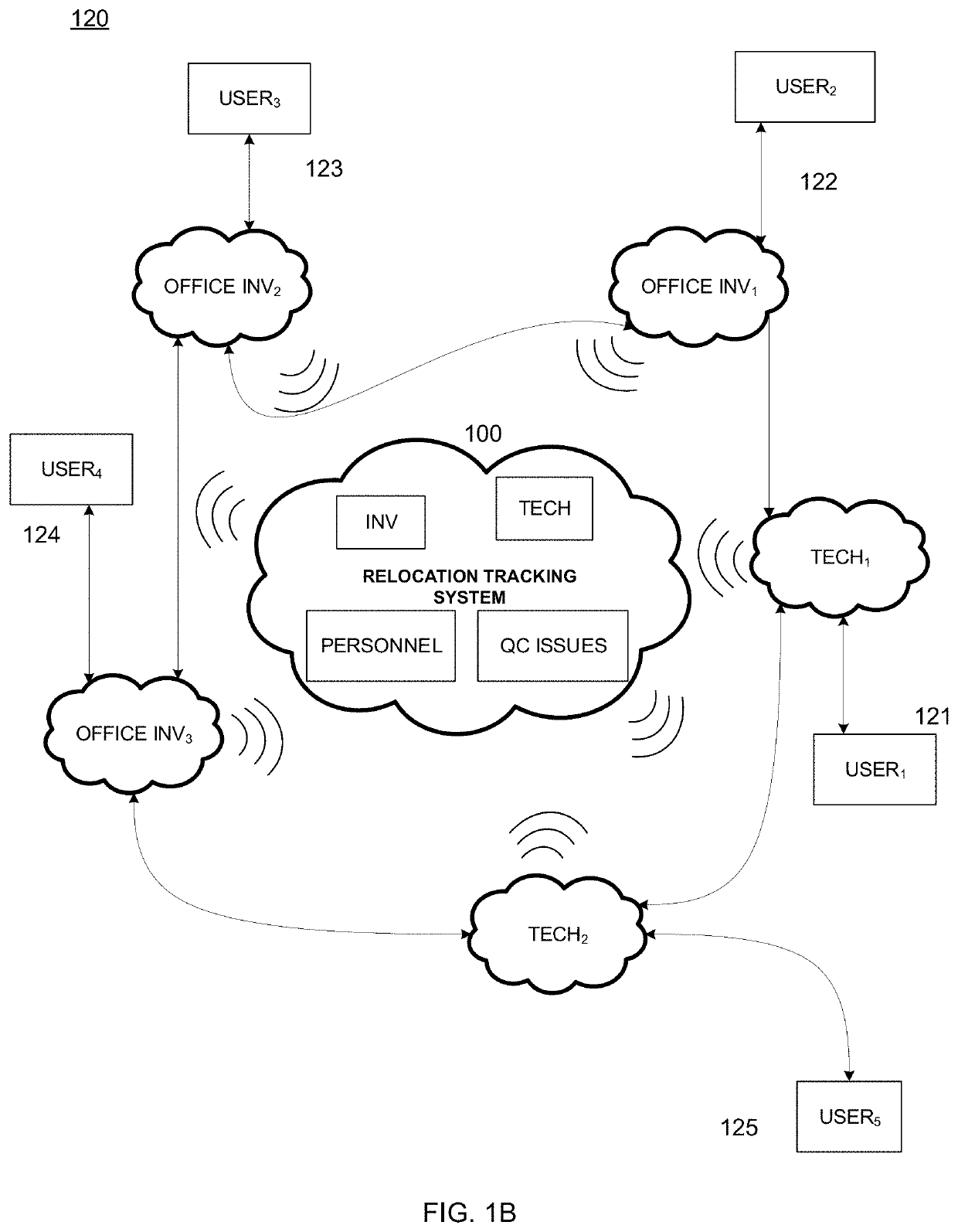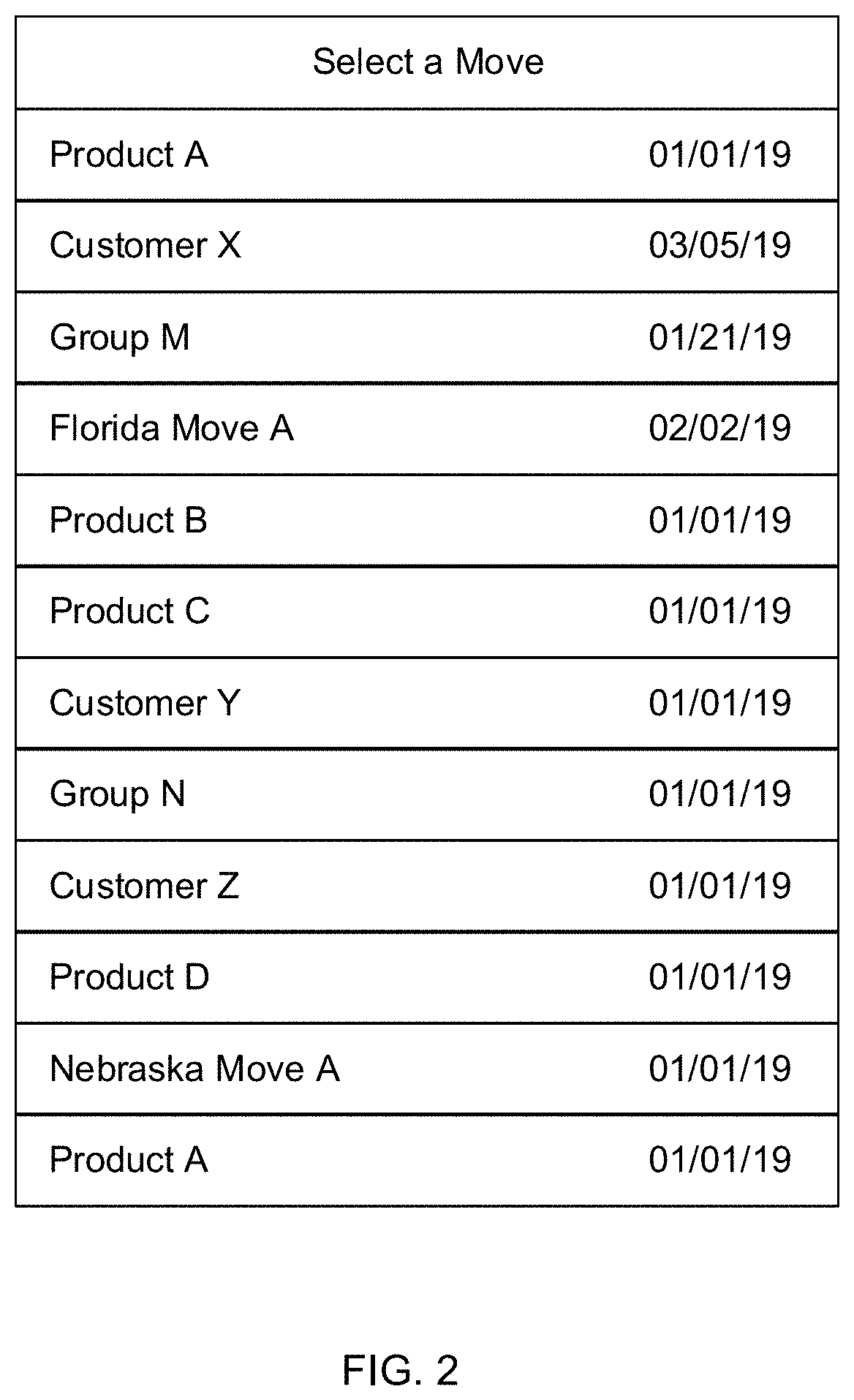Methods and systems to track relocation status
a technology of relocation status and method, applied in the field of methods and systems to track relocation status, can solve the problems of only discovering missing items, not following best practices checklist, and not planning how to be effective during a move, so as to facilitate a move request and efficiently input information and receive.
- Summary
- Abstract
- Description
- Claims
- Application Information
AI Technical Summary
Benefits of technology
Problems solved by technology
Method used
Image
Examples
Embodiment Construction
[0047]The present disclosure provides generally for methods and systems relating to relocation management. According to the present disclosure, several users may have access to the system, including employees or contractors performing relocation services, customers interested in seeing how the relocation process is progressing, and management who may not be on-site but would like to see that there is steady progress on the relocation. While each type of user may have access to the system, there may be different authorizations for what functions each user may perform.
[0048]In the following sections, detailed descriptions of examples and methods of the disclosure will be given. The description of both preferred and alternative examples, though thorough, are exemplary only, and it is understood to those skilled in the art that variations, modifications, and alterations may be apparent. It is therefore to be understood that the examples do not limit the broadness of the aspects of the u...
PUM
 Login to View More
Login to View More Abstract
Description
Claims
Application Information
 Login to View More
Login to View More - R&D
- Intellectual Property
- Life Sciences
- Materials
- Tech Scout
- Unparalleled Data Quality
- Higher Quality Content
- 60% Fewer Hallucinations
Browse by: Latest US Patents, China's latest patents, Technical Efficacy Thesaurus, Application Domain, Technology Topic, Popular Technical Reports.
© 2025 PatSnap. All rights reserved.Legal|Privacy policy|Modern Slavery Act Transparency Statement|Sitemap|About US| Contact US: help@patsnap.com



